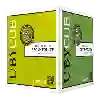
Winery Comte Henry d'AssaySauvignon Côtes de Gascogne
This wine generally goes well with vegetarian, rich fish (salmon, tuna etc) or shellfish.
Food and wine pairings with Sauvignon Côtes de Gascogne
Pairings that work perfectly with Sauvignon Côtes de Gascogne
Original food and wine pairings with Sauvignon Côtes de Gascogne
The Sauvignon Côtes de Gascogne of Winery Comte Henry d'Assay matches generally quite well with dishes of rich fish (salmon, tuna etc), shellfish or vegetarian such as recipes of quiche with leeks and fresh salmon from flo, scallops with coconut cream or spinach and goat cheese quiche.
Details and technical informations about Winery Comte Henry d'Assay's Sauvignon Côtes de Gascogne.
Discover the grape variety: Len de l’El
Len de l'El Blanc is a grape variety that originated in France (Tarn). It produces a variety of grape specially used for wine making. It is rare to find this grape to eat on our tables. This variety of grape is characterized by large bunches of grapes of medium size. The Len de l'El Blanc can be found grown in these vineyards: South West, Cognac, Bordeaux, Armagnac, Rhone Valley, Provence & Corsica.
Informations about the Winery Comte Henry d'Assay
The Winery Comte Henry d'Assay is one of of the world's greatest estates. It offers 9 wines for sale in the of Côtes de Gascogne to come and discover on site or to buy online.
The wine region of Côtes de Gascogne
The wine region of Côtes de Gascogne is located in the region of Comté Tolosan of Vin de Pays of France. Wineries and vineyards like the Domaine Sichel or the Domaine Haut-Marin produce mainly wines white, red and sweet. The most planted grape varieties in the region of Côtes de Gascogne are Colombard, Gros Manseng and Merlot, they are then used in wines in blends or as a single variety. On the nose of Côtes de Gascogne often reveals types of flavors of red fruit, tangerine or jam and sometimes also flavors of watermelon, pomegranate or lemon grass.
The wine region of Comté Tolosan
Comte Tolosan is a PGI title that covers wines produced in a large area of Southwestern France. The PGI basin encompasses 12 administrative dePartments and is home to a wide range of appellations d'origine contrôlée (AOC) such as Jurançon, Cahors and Armagnac. The IGP label provides a geographical classification for wines that are not classified for AOC level appellations due to Grape variety or winemaking style. The region is part of the Aquitaine basin - the plains that lie between the Pyrenees, the Massif Central and the Atlantic Ocean to the west.
The word of the wine: Maturing (champagne)
After riddling, the bottles are stored on "point", upside down, with the neck of one bottle in the bottom of the other. The duration of this maturation is very important: in contact with the dead yeasts, the wine takes on subtle aromas and gains in roundness and fatness. A brut without year must remain at least 15 months in the cellar after bottling, a vintage 36 months.












